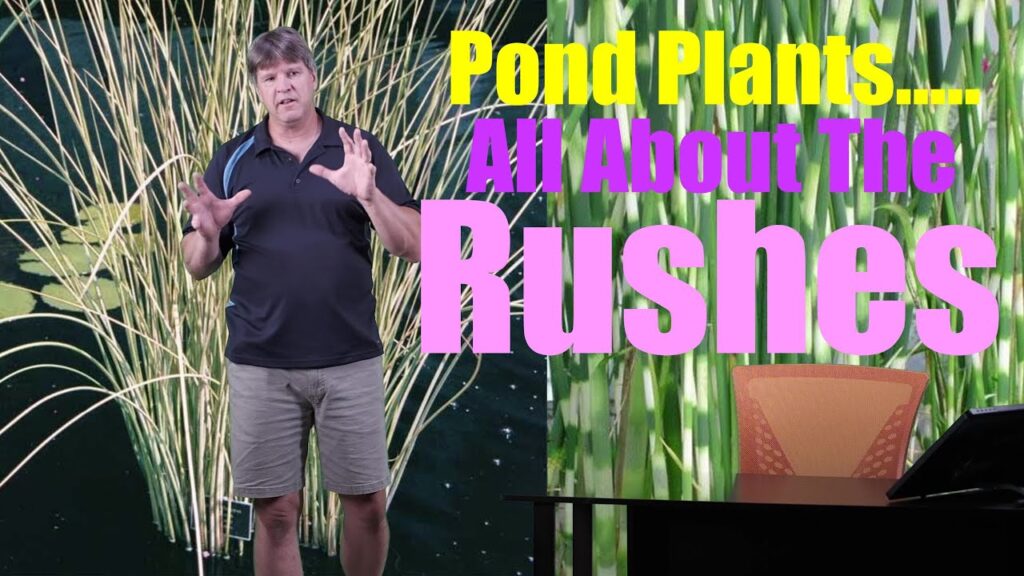- Juncaceae Juncus: Features and Layout
- List of the most important juncaceae juncus plants
- Juncus occidentalis – Western Rush
- Juncus acuminatus – Tapertip Rush
- Juncus bolanderi – Bolander’s Rush
- Juncus bufonius var. bufonius – Toad Rush
- Effusus ssp. Pacificus – Soft Rush
- Juncus ensifolius – Swordleaf Rush
- Juncus nevedensis – Nevada Rush
- Juncus oxymeris – Pointed Rush
- Juncus patens – Spreading Rush
- FAQs About Juncaceae Juncus
Juncaceae Juncus: Features and Layout
General Features
Consisting of perennial and some annual wetland graminoids, juncaceae juncus leaves are long and simple with parallel veins. Members of Juncaceae are different from Cyperaceae and true grasses. Their leaves are usually hollow and round.
Presence in the Willamette Valley Wetlands
In the Willamette Valley Wetland Prairies, two Juncus species have a leaf arrangement like Iris. Two rushes stand out in the area known as Pointed Rush (Juncus oxymeris) and Dagger Leafed Rush under the name Juncus ensifolius. Clumping plants in this group exist as rhizomatous species while several species develop light to dark brown papery leaf base sheaths.
Diversity and Distribution
There are seven genera and 350 species worldwide. People usually identify them as representing places with moist soil.
Flowers and Reproductive Structure
Unlike Sedges and Grasses, Juncaceae have real flowers. You might need a magnifying glass to see them closely.
Tiny flowers are like other monocots. They have three sepals, three petals, and six stamens. In the center, there is a pistil with a three-pronged stigma on top.
Adaptation
Inflorescences are mostly terminal or laterally emerging cymes that vary dramatically in shape and arrangement. The many species found in Willamette Valley wetland prairies differ in height and leaf color. They also show a variety of habitats, which reflects their ability to adapt to different water levels.
List of the most important juncaceae juncus plants
Juncus occidentalis – Western Rush
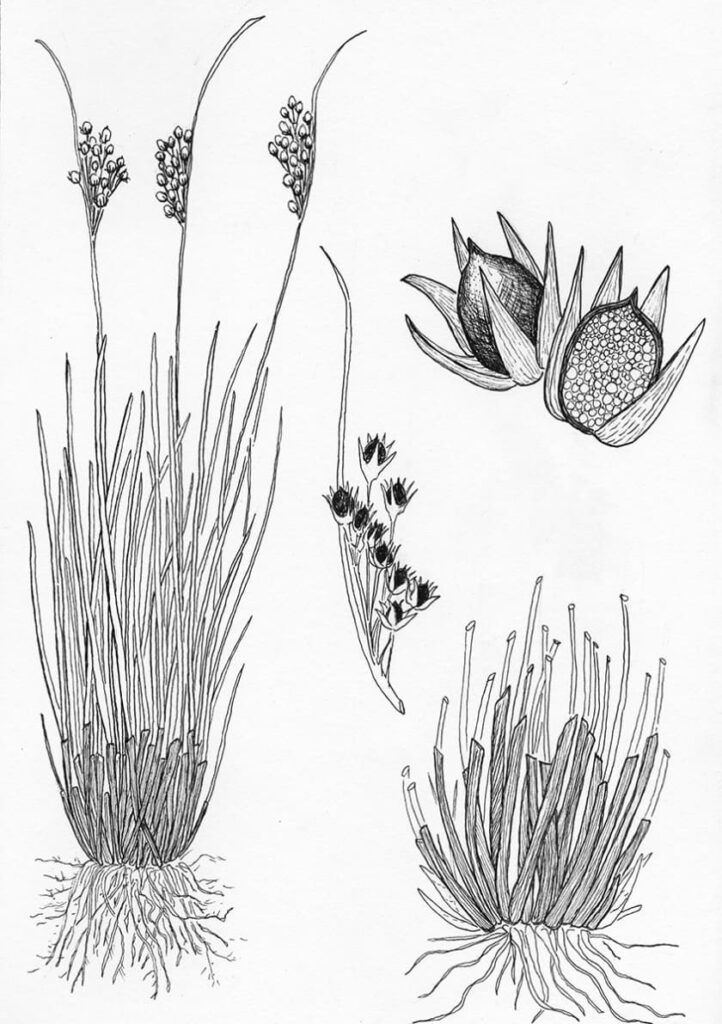
Habit
A bright green, dense growing tufted perennial rush. Bunched at the base with a fibrous root system.
The plant grows about 15 to 60 cm tall when fully grown. It has multi-branched flowers that are 1 to 7 cm long. Each stem has 4 to 6 rounded seed capsules at the top.
Wild irises of the family Iridaceae also thrive near reeds..’
Leaves
Narrow, round stems are only 1 to 3 mm wide
With no leaf blades. Auricles are white and thin. They are 1 to 3.5 mm long. They look like an overlapping part of the leaf sheath.
Flowers
Diffuse, terminal inflorescences are 1-7 cm long and branched, bearing 10 to 50 single flowers. Six Tepals are 4 to 5 mm long, with green midribs and white margins.
Fruits
Straw colored, oblong/oval shaped capsules contain many, tiny seeds that are dark brown when ripe. Juncus occidentalis will not produce seed in its first year following germination. However, these plants are long-lived, can seed for more than five years, yielding dramatic numbers of seeds ranging from 300 to 900 lbs. per acre per year.
Ecology
FACW, or Facultative Wetland species, grow in wet, compacted clay soils. You can also find them in shallow stream beds, wet road sides, or open lake areas.
Notes
J. occidentalis (formerly known as Juncus tenuis) requires hydric soils that are seasonally moist to semi-flooded. J. occidentalis can cover a large area even with low seeding rates of 1 to 4 seeds per square foot.
Planners are careful in areas where they want to increase biodiversity. However, native species can be helpful in places where invasive plants are a problem.
An example of this is Reed Canary Grass (Phalaris arundinacea).. In large natural resource areas, periodic, low intensity burns helped limit J. occidentalis dominance on the site level.
Juncus acuminatus – Tapertip Rush

Juncus bolanderi – Bolander’s Rush
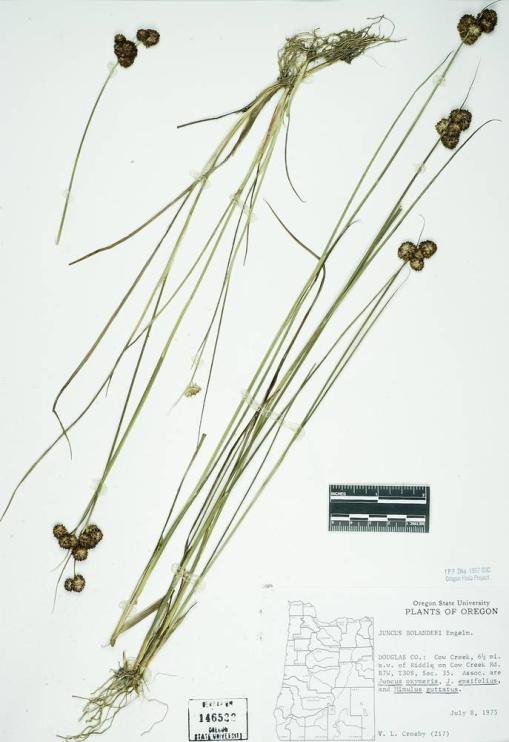
Juncus bufonius var. bufonius – Toad Rush
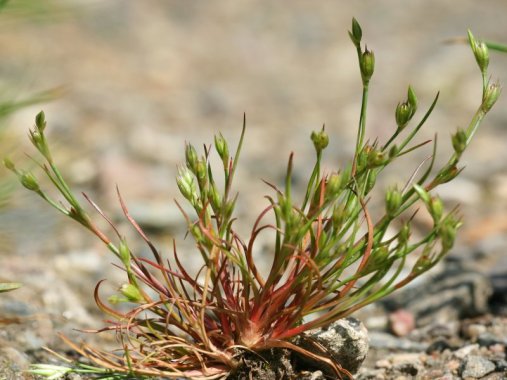
Effusus ssp. Pacificus – Soft Rush
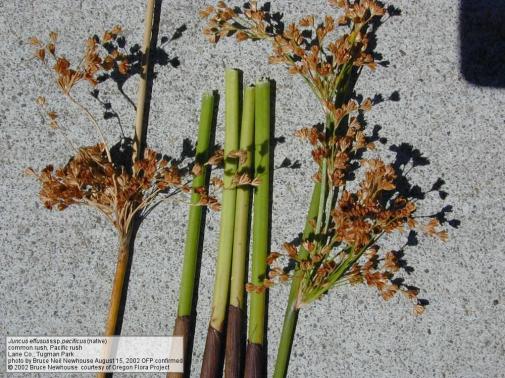
Juncus ensifolius – Swordleaf Rush
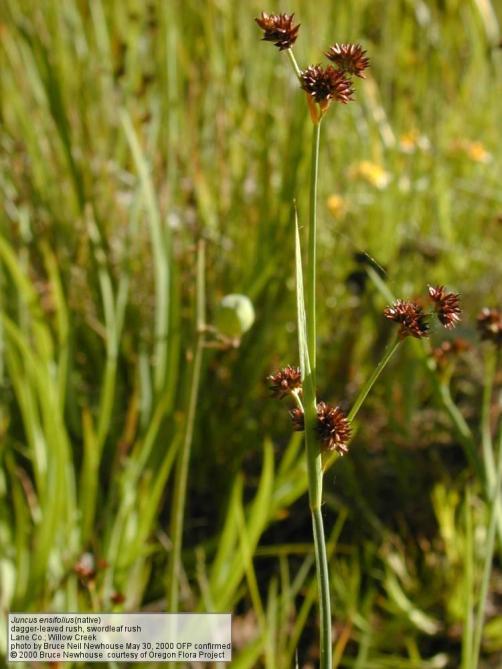
Juncus nevedensis – Nevada Rush
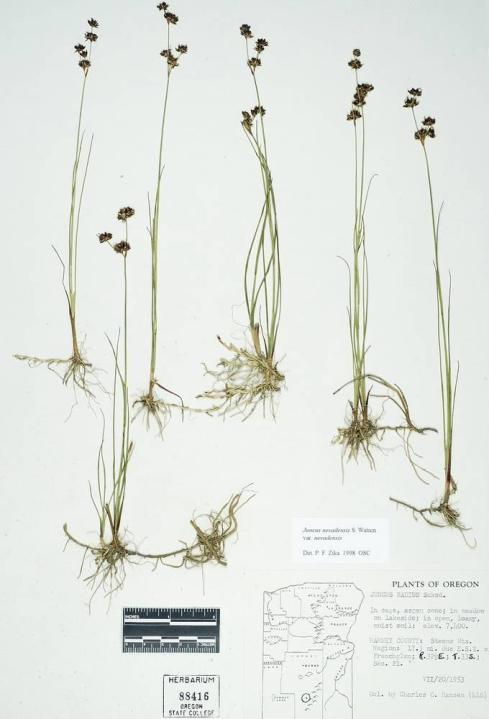
Juncus oxymeris – Pointed Rush
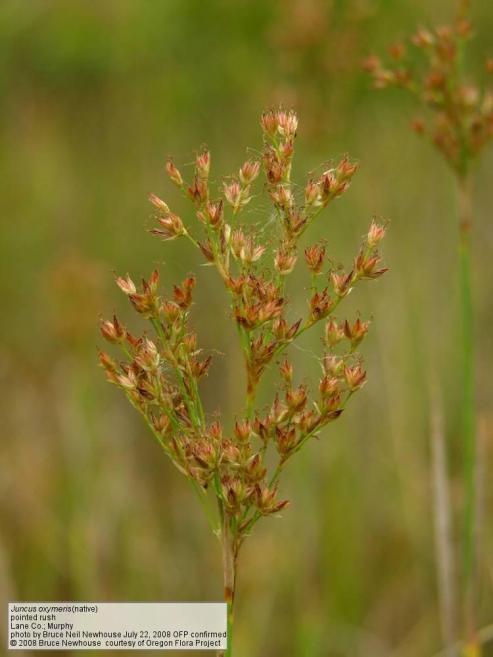
Juncus patens – Spreading Rush
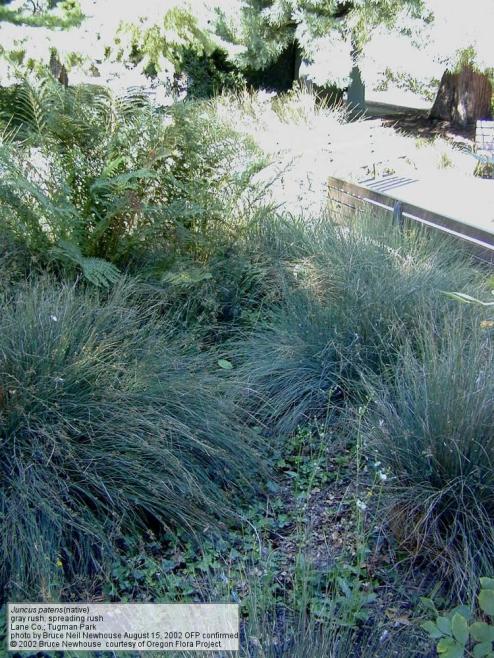
FAQs About Juncaceae Juncus
This article was validated by:
Bibliographic Reference Sources:
Newhouse, Bruce. Comparison of Juncus spp. Found in the West Eugene Wetlands. 1995.
Elpel, T. J., Botany in a Day: The Patterns Method of Plant Identification. HOPS Press, 2004. 159.
Guard, J. Wetland Plants of Oregon and Washington. Lone Pine Publishing, Edmonton, Alberta. 1995.
Flora of North America eFlora: < http://www.efloras.org/florataxon.aspx?flora_id=1&taxon_id=222000161>

